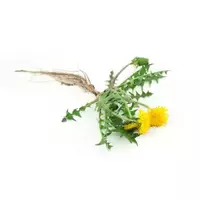Dandelion

Dandelion is a famous plant for our latitudes. However, in most cases, dandelion or Taraxacum are classified as weedy and useless species and try to uproot the plant as quickly as possible. Meanwhile, dandelion belongs to the genus of herbaceous plants that belong to the Astrov family and have long been used in the pharmacological industry to produce a number of drugs. In addition, dandelion is eaten. Dandelion can be safely called an amazing plant.
Dandelion species
There are more than a thousand species of dandelions in nature, with only 70 of them classified as "large" or the most common subspecies of the plant. Dandelion is on a small list of plants that grow throughout the planet Earth, with the exception of, perhaps, the harsh Arctic latitudes. Dandelion species differ in appearance, distribution territory, as well as in their properties and chemical composition. All components of the plant are used in pharmaceutical and food industry.
Dandelion composition
The useful properties of the plant are due to the chemical composition of the dandelion. However, not all types of dandelions can be eaten. In our latitudes, the most common species is the medicinal dandelion Taraxacum officinale. The beneficial properties of medicinal dandelion have been known since ancient times. Infusion from the root of the plant is used in folk medicine to improve appetite and digestion. In addition, the composition of the dandelion contains vitamins of group A, B, C, E, as well as calcium, phosphorus and potassium.
Dandelion benefits
However, the unique benefit of dandelion for the human body lies in the sufficiently high level of natural protein content in the plant. The benefits of dandelions, as a powerful natural antioxidant, were known and actively used by ancient Chinese medicines. Dandelions are able to cleanse blood of harmful compounds, a decoction of flowers and leaves of the plant has antispasmodic and laxative properties. In cooking, inflorescences and dandelion leaves are used.
The favorite treat of the indigenous people of the American continent was considered a salad of fresh and young dandelion leaves. The taste of the leaves of the plant is devoid of bitterness and perfectly combined with other vegetables, salads, meat and fish ingredients. From the roots of dandelion, a coffee surrogate is made, which somewhat resembles a drink from the root of chicory. Jam is made from dandelion flowers, and low-alcohol wine is also made.
The dandelion plant is classified as an excellent honey. Dandelion pollen honey is distinguished by its delicate floral taste and aroma. A special type of dandelion honey is made from dandelion buds. Recently, herbal phyto teas have become increasingly popular. Some herbal teas and collections include leaf-dried dandelion inflorescences. In order to feel the beneficial effects of the plant, you do not need much at all, drink a cup of herbal tea with dandelion every day. Such a drink is able to improve the body and give a good mood.
dandelion 45 kCal
Energy value of dandelion (Ratio of proteins, fats, carbohydrates - ju):
Proteins: 2.7 g (~ 11 kCal)
Fats: 0.7 g (~ 6 kCal)
Carbohydrates: 6.7 g (~ 27 kCal)
Energy ratio (bj | y): 24% | 14% | 60%
 Español
Español Français
Français Português
Português Русский
Русский 简体中文
简体中文 繁體中文
繁體中文 日本語
日本語 한국어
한국어 العربية
العربية Türkçe
Türkçe Қазақ
Қазақ Deutsch
Deutsch Italiano
Italiano Українська
Українська
